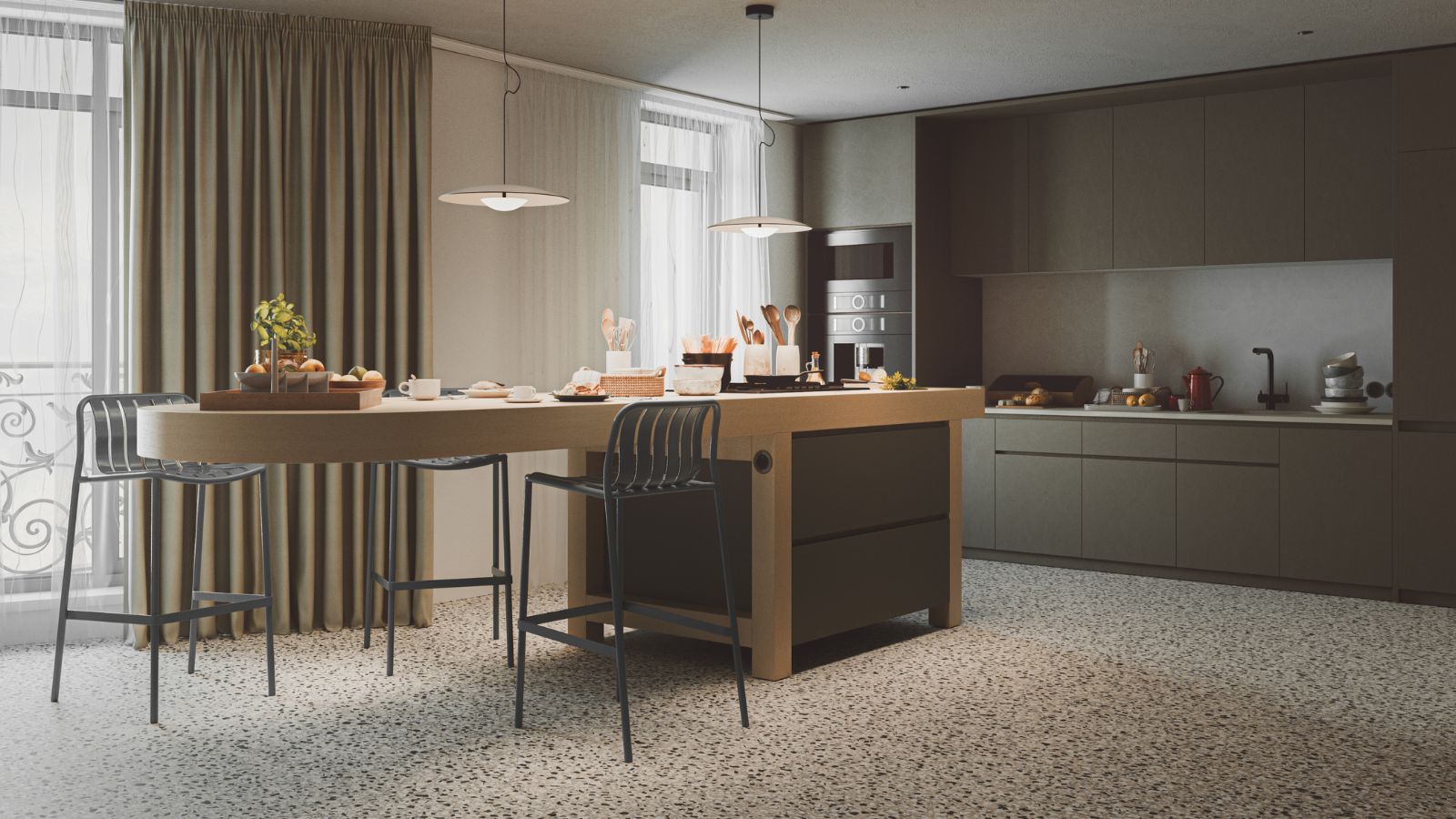
A sparkling finish only further makes this beautiful flooring shine, but how do you clean a terrazzo floor to keep it in tip-top shape?
From using the right tools to avoiding waxes and chemical cleaners, there are several things to keep in mind to preserve the durability of these gorgeous floors, reveal our flooring experts.
Here, the professionals share their top tricks for cleaning a floor without streaks and keeping your terrazzo floors looking as fresh as the day they were installed.
How do you clean a terrazzo floor?
Before you can start cleaning terrazzo floors, you will need the following tools to mop floors the right way:
- A soft-bristled broom, from Walmart, or one of the best vacuums for hardwood floors. which can help to prevent damage to the surface
- A microfiber mop, such as the O-Cedar Microfiber Cloth Mop from Target
- A gentle stone or tile cleaner, such as the Method Squirt+Mop Hard Floor Cleaner, from Walmart
- A bucket of warm water
- A clean, dry towel or mop head
- A terrazzo sealant, such as MORE Quartz Sealer from Amazon, for annual resealing
1. Sweep regularly
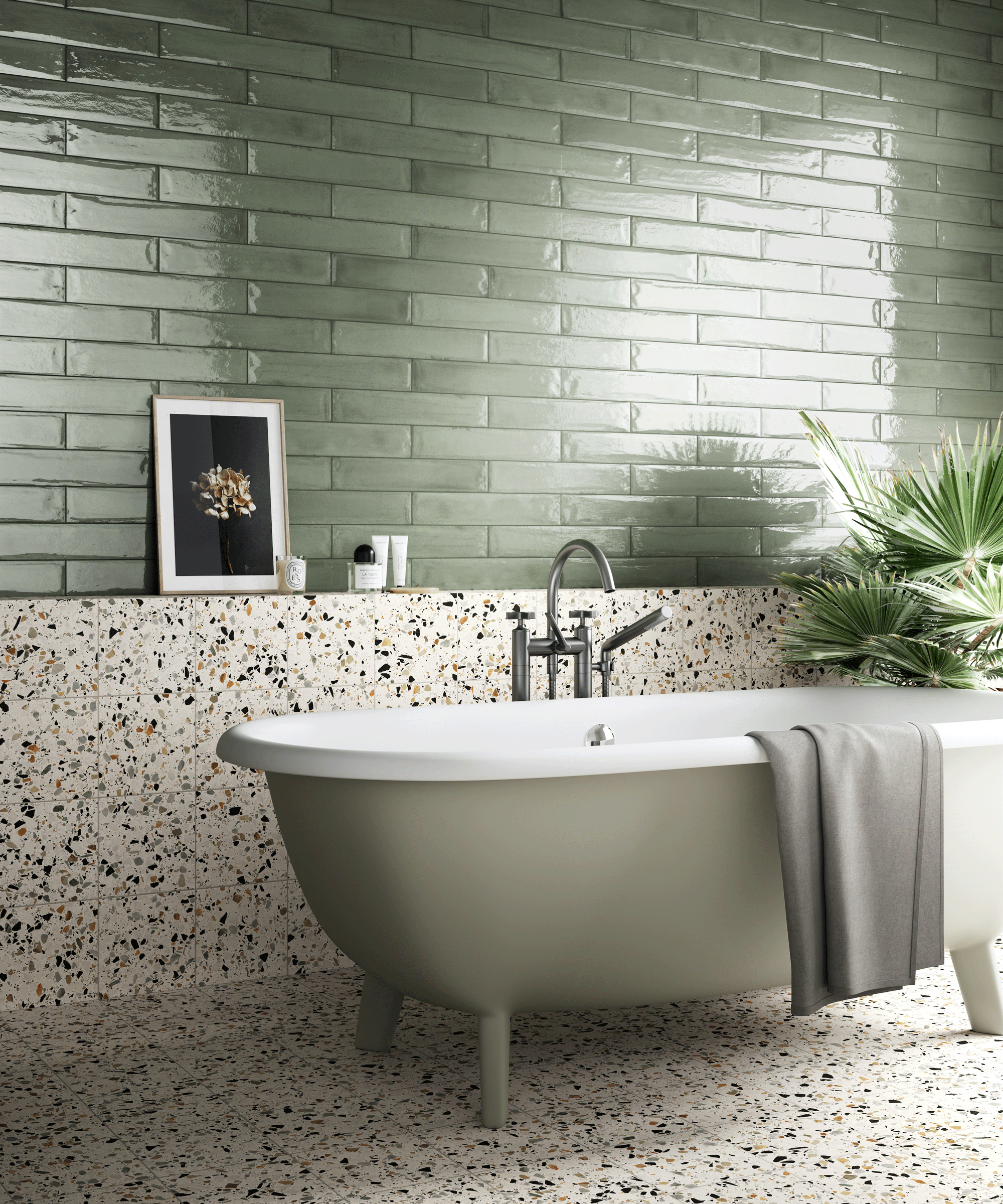
While you don’t need to clean floors every day, it is very useful to stay on top of dirt to protect your shiny terrazzo floor from cloudiness or scratches.
Alan Dewberry flooring and tile expert, and owner at Tile Factory Direct begins, ‘For this aspect of cleaning, I recommend a soft-bristled broom or vacuum with a hard floor setting and no beater bar as grit can act like sandpaper and cause fine scratches on the terrazzo. Habituate yourself into doing this regularly, even daily for high-traffic areas.’
2. Avoid mopping with harsh chemicals
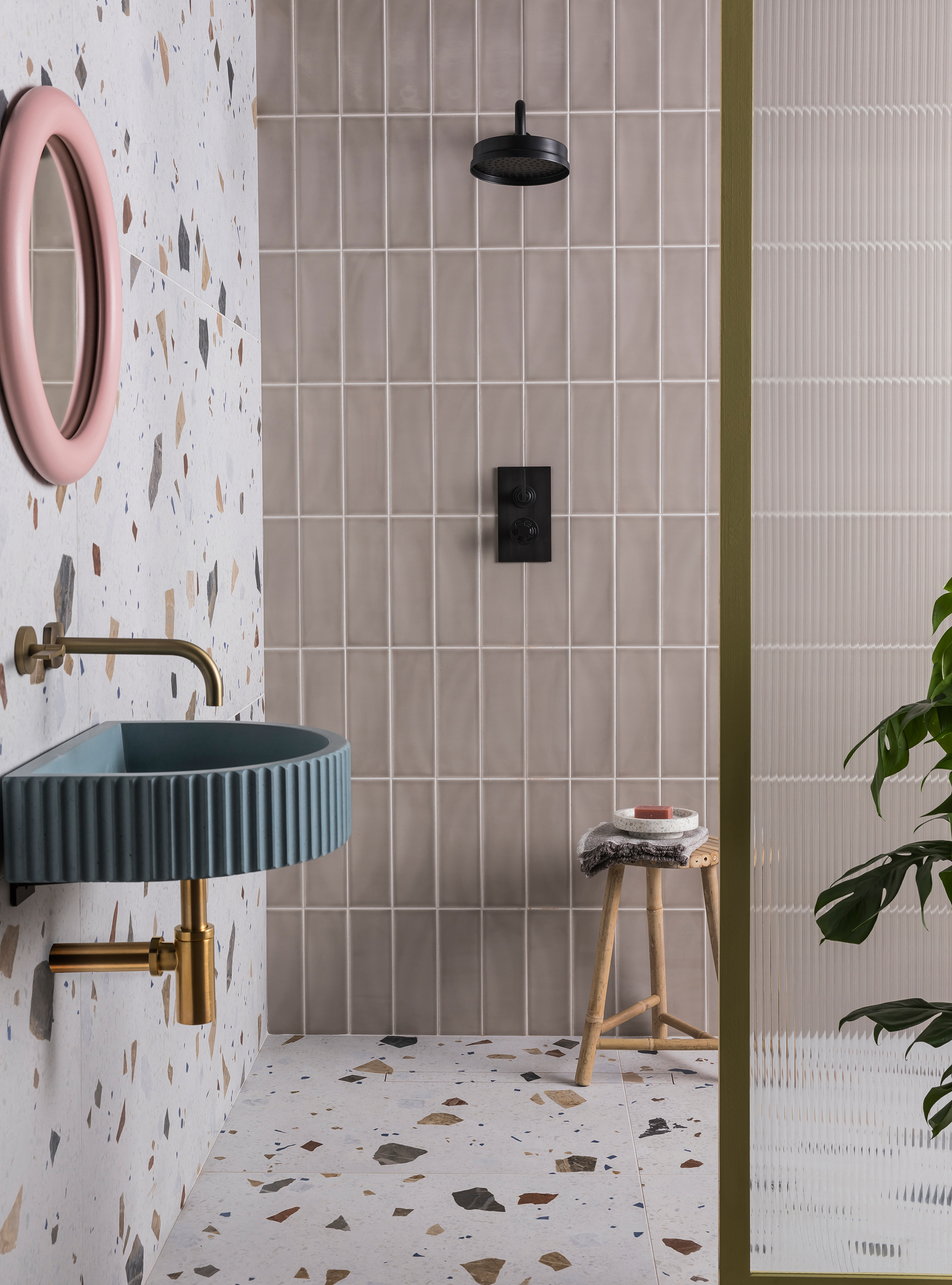
You do not need harsh chemicals to clean well, and that is especially true for cleaning terrazzo floors. Alan explains, ‘One of the most vital pieces of advice I give to homeowners is avoiding any overly acidic or abrasive products. Vinegar, lemon juice, bleach, or ammonia will seem like miracle cleaners but ultimately leave a permanently etched or discolored surface on the terrazzo. In the same vein, avoid any powdered cleansers or scrub brushes with hard bristles. These can scratch the floor and wear down the sealant, thereby making it vulnerable to staining.’
Instead, as with cleaning tile floors, it is best to mop with a soft mop such as the Great Value Microfiber Dust Mop from Walmart, and a gentle dedicated floor cleaner. Alan continues, ‘Prepare a bucket of warm water and add a neutral, non-toxic cleaning agent. My choice is the Black Diamond Stoneworks Marble & Tile Floor Cleaner, also available at Walmart, which has been carefully manufactured to use with natural stone and terrazzo. It is biodegradable, safe for pets and kids, and leaves no sticky residue. I mop the floor with a microfiber mop – never a sponge mop, which can push dirty water into pores or crevices – and let the cleaner sit for a minute or two on any sticky spots before wiping those areas with gentle strokes.’
3. Rinse after cleaning
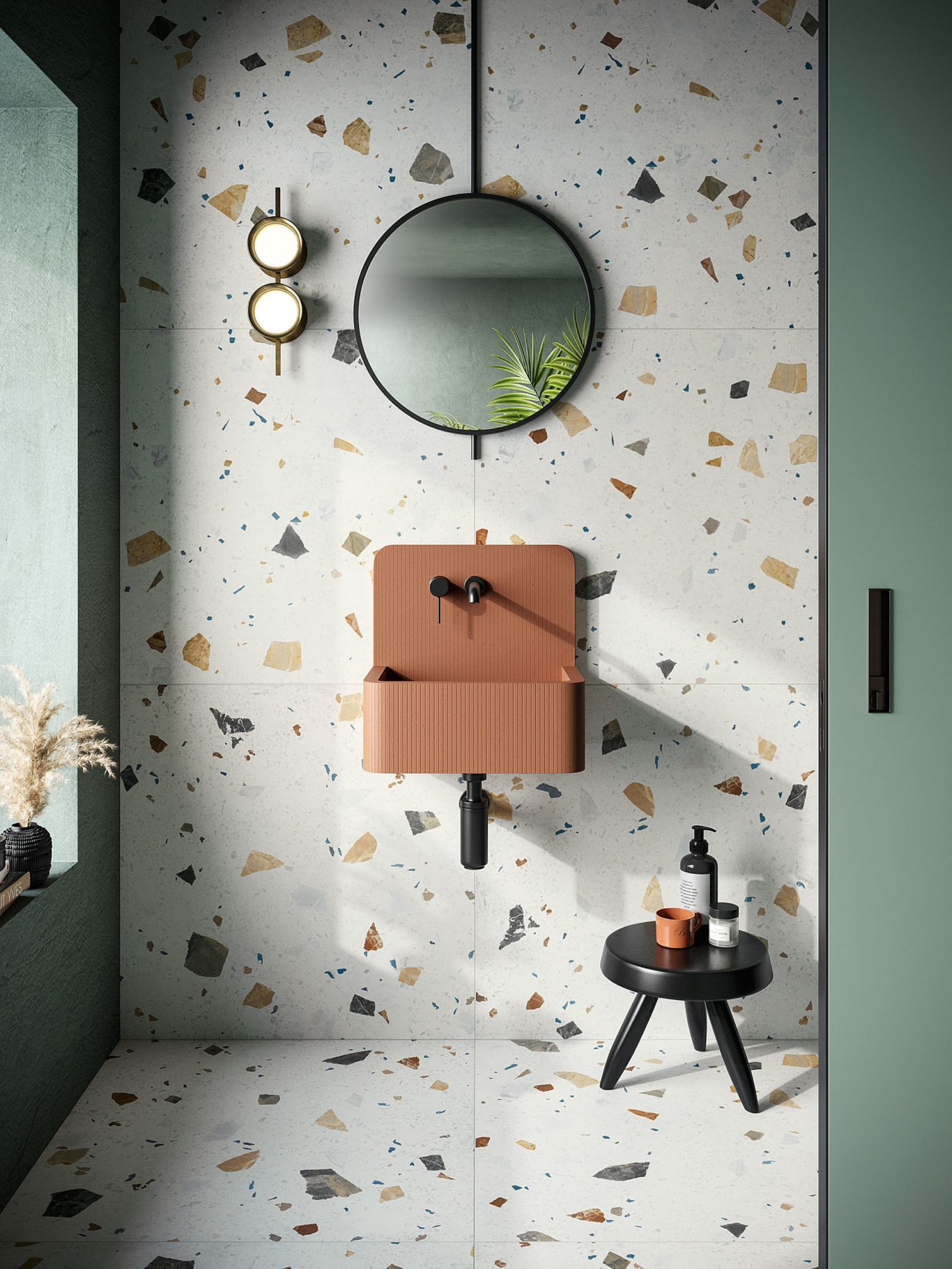
As with cleaning linoleum floors, Alan adds, ‘After mopping, rinse with clean warm water to remove all cleaning solution remnants. Sadly, it is a step that usually does not happen for a lot of people. However, it saves any future build-up.’
4. Dry thoroughly

Even if you are cleaning a kitchen floor or cleaning a bathroom floor that is regularly subjected to splashes, it is vital to dry the floors completely after cleaning to avoid smears and stains.
Flooring expert, Liam Cleverdon from Flooring King says, ‘It’s easy to forget one of the most important steps in cleaning your floors and just leaving them to air-dry. However, adding the time into your cleaning routine to properly dry your floors is vital for protecting them against moisture damage, similar to using an overly wet mop.’
This is also a good time to check for any lingering marks and enact the golden rules of stain removal, Liam adds. He suggests, ‘If you have stubborn marks on your floor that a mop can’t lift, then get a damp cloth and your concentrated cleaning solution to remove these tougher stains. With this step, don’t be tempted to scrub, simply pat the stain gently until it lifts.’
5. Finish by polishing
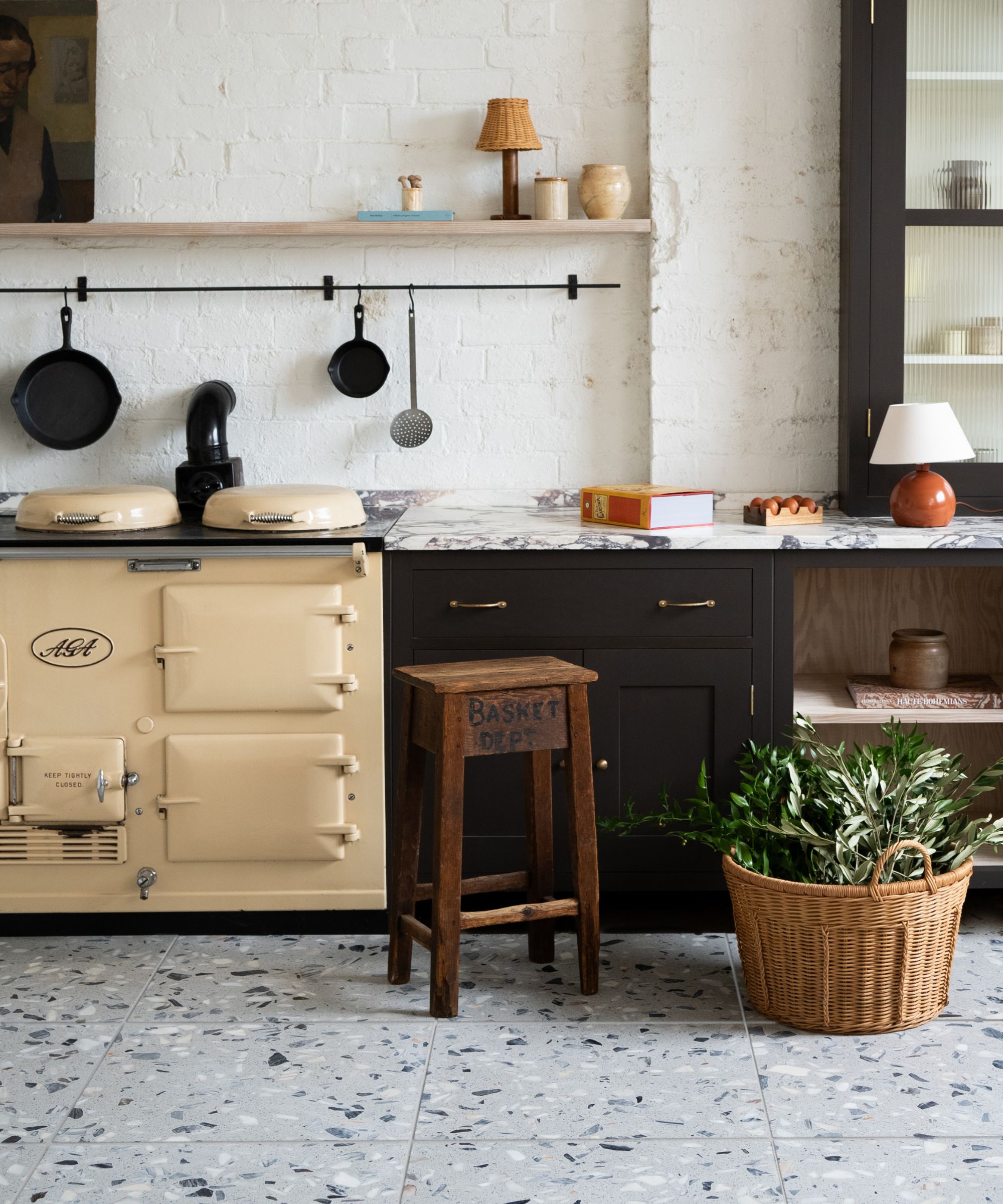
Although waxing floors is not always a good idea, it is sometimes good to repolish your terrazzo floors to maintain the shiny finish, Alan says.
He shares, ‘Whenever dull or with light surface stains, I apply a terrazzo-safe polishing compound. One of the best options is MB Stone Care MB-22 E-Z Polish, available at Amazon. This natural, non-toxic polishing powder can be buffed in with a low-speed floor buffer or even through hand usage with a white pad on smaller jobs. Restores the shine without toxic chemicals.’
What to shop
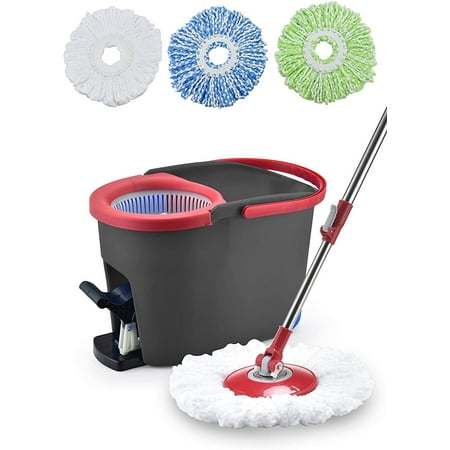
This spin mop comes with a draining bucket to help remove excess water from your mop before cleaning to avoid swamping your floors. It also comes with spare mop heads to make drying and polishing easier.
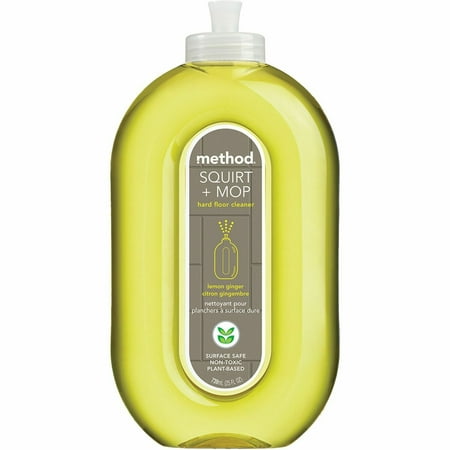
The Method cleaning products are made with plant-based formulas to limit toxins, and are safe for use to clean linoleum, vinyl, laminate and tile floors.
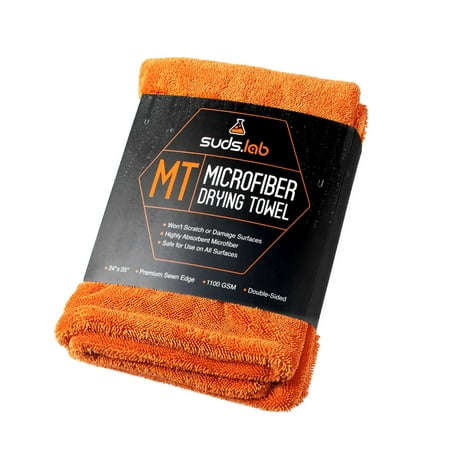
Microfiber is super absorbent, making light work of drying large areas such as floors. It is also super soft, preventing scratches and streaks.
FAQs
What should you not use to clean terrazzo floors?
When cleaning terrazzo floors, you should avoid using harsh chemical cleaners, which can strip away the protective sealant and damage the surface. You should also avoid using surface waxes, as these can make terrazzo slippery and pose a hazard.
To make cleaning terrazzo easier and avoid future home cleaning mistakes, it is advisable to seal your terrazzo floors to protect them from stains and damage. Alan Dewberry concludes, ‘Resealing is imperative for the floor in order to keep it healthy over the long-term. I recommend resealing terrazzo every one to two years, depending on foot traffic and abuse. Using such a low VOC, water-based terrazzo sealer such as Aqua Mix Sealer's Choice Gold, from Amazon, which can help protect the floor against damage.’







